Ad Hoc Networks Research
(1996 - 2008)
Radio Frequency Propagation,
Radar Datalinking, Routing,
Smart Networks, GNSS Protocols, Network Performance Modelling
|
|
Introduction
|
|
|
Ad
Hoc Networks are self organising, self healing, distributed networks
which most often employ wireless transmission techniques. My ongoing
research in this area is divided into several domains. The first is
airborne ad hoc networking (my doctoral research topic), the second is
Suburban Ad Hoc networking and the related topic of Smart Ad Hoc
Networks, and the third is in networked military systems.
My research in this area by necessity spans a number of
areas of physics, engineering and computer science. These include
radiofrequency propagation effects in “radar-like” and urban
geometries, antenna parametrisation, satellite navigation support
protocols, routing strategies and protocols, and network performance
modelling. Related research I have performed includes radar performance
modelling and vehicle signature modelling.
|
|

|
|
The Suburban Ad Hoc (Area) Networking group
(1996 - 2008)
focused
its
research activities on techniques for implementing Suburban Ad Hoc
Networks. These are self organising, quasi-static ad hoc (typically
wireless) networks which provide an alternative technology for
providing
high speed digital connectivity to households, small businesses and
distributed campuses. Specific areas of research interest include
security, low level routing protocols, access controls and propagation
behaviour. |
|
|
|
|
Smart Ad Hoc Networks (2004 - 2008)
|
|
Smart
Ad
Hoc
Networks
are
capable
of
analysing
the
radio
propagation
environment they operate in
to optimise performance. This typically requires that the network nodes
have positioning capability as well as memory to recall geographically
local conditions. GNSS systems are the most affordable approach to
providing network
nodes with positioning capability.
|
|
Airborne Ad Hoc Networks (1996 - 1999)
|
|
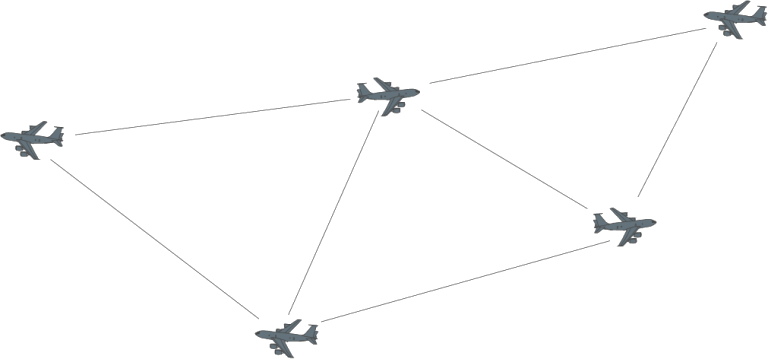
|
|
Airborne
Ad
Hoc
Networks
(AAHN)
are
a
form
of
ad
hoc
network
in which the
transceivers and routers are carried by airborne platforms, such as
conventional aircraft, High Altitude Long Endurance or conventional
Uninhabited Aerial Vehicles, tethered aerostats or dirigibles. As
such the AAHN has many quite different characteristics compared to
conventional 'terrestrial' ad hoc networks. While AAHNs offer enormous
footprint coverage for each node, compared to conventional solutions,
this is achieved at the expense of unique problems in antenna
placement,
transceiver design, protocol design and integration.
|
|
Airborne Ad Hoc Network Primer (1996 - 1999)
|
|
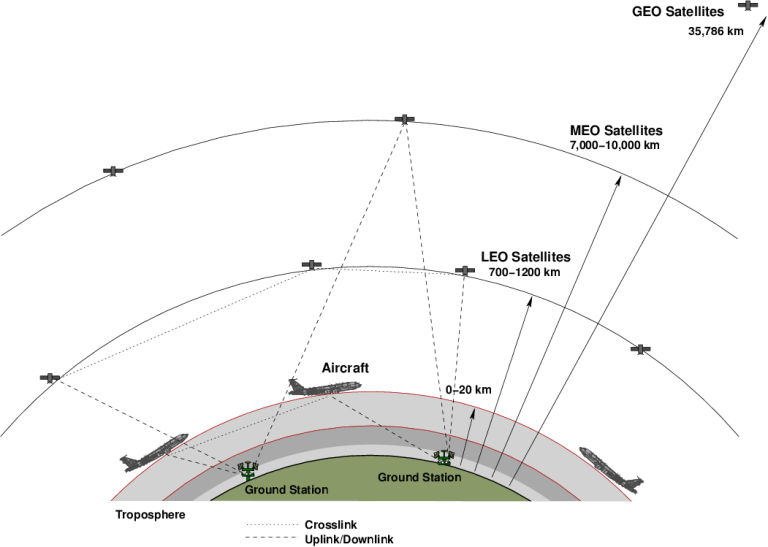
|
|
Perhaps
the
best
contextual
comparison
depicting
the
unique
properties
of
the
AAHN
is
its geometry compared to conventional satcom links. With most
aircraft at the tropopause, and some in the stratosphere (UAVs) or
lower
troposhere, propagation related issues are far more pronounced against
satcom systems, while latency is inherently better, especially where
the
network footprint is relatively modest.
|
|
|
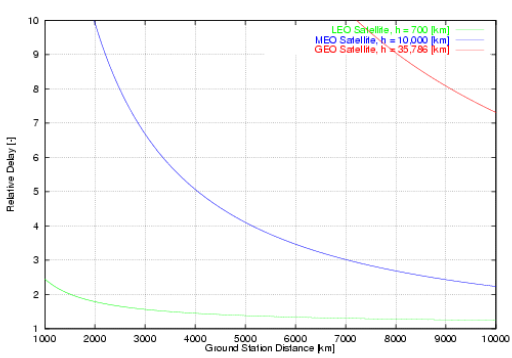 |
|
This chart compares latency behaviours for
satellite systems. The AAHN at shorter distances experiences latencies
which are characteristic of terrestrial networks.
|
|
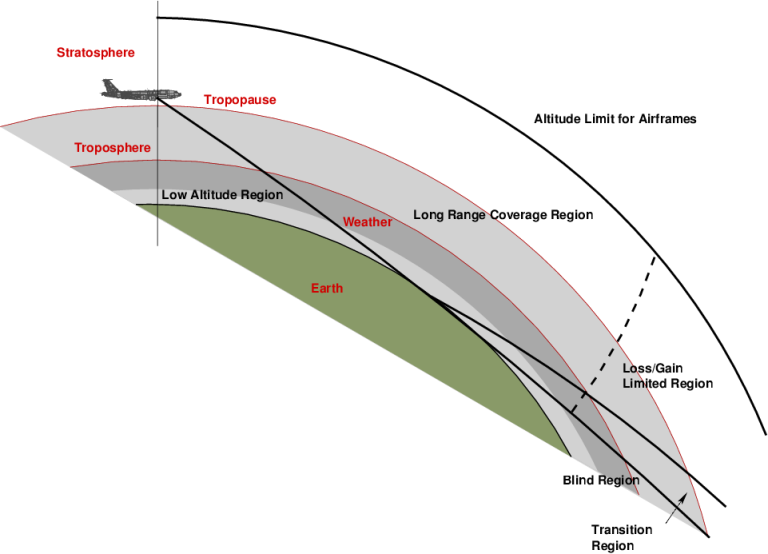
|
|
Propagation
geometry
chart
for
an
AAHN
link.
The
most
interesting
problems
to
solve
arise in the Loss/Gain limited and Transition regions.
|
|
|
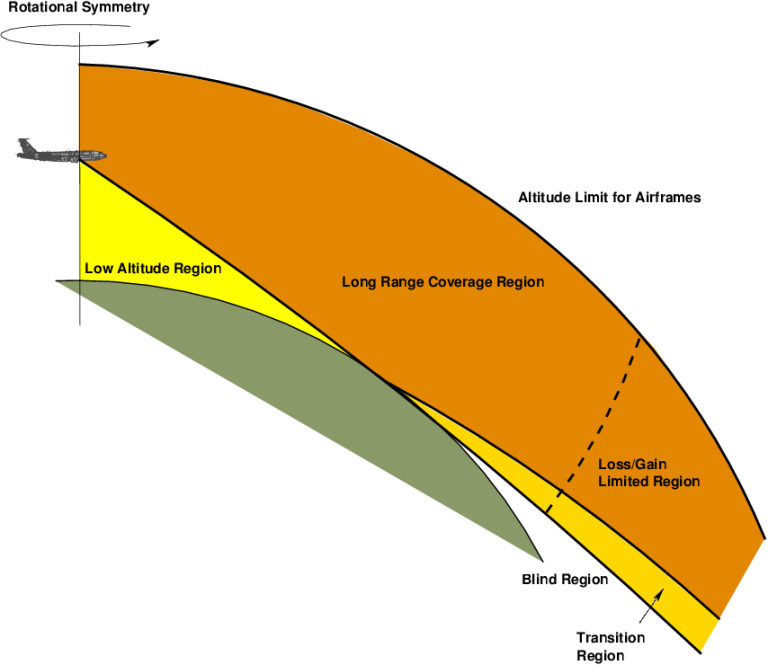
|
|
This chart depicts the coverage
requirements for an AAHN antenna suite on a conventional aircraft.
|
|
|
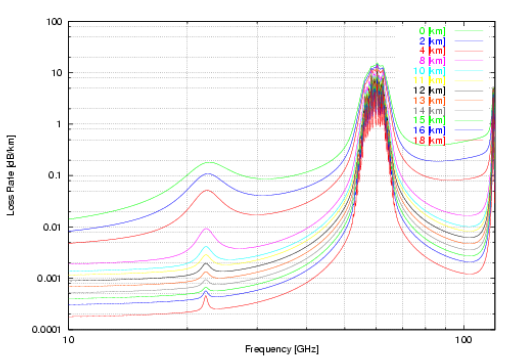
|
|
Modelling
long
range
link
behaviour
requires
simulation
of
propagation
losses.
This
plot
was
produced by the TROPPO simulator and depicts gaseous
losses as a function of altitude, using the Van Vleck, Liege and Blake
models.
|
|
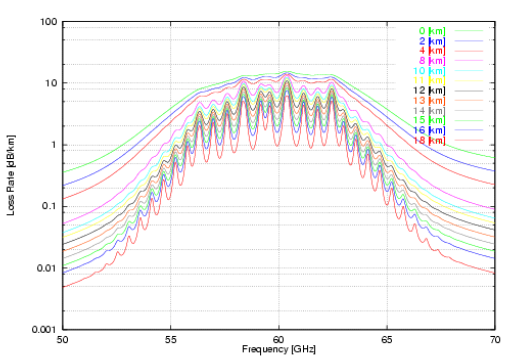
|
|
Fine
structure
of
the
gaseous
loss
model
in
the
Oxygen
resonance
region
using
the TROPPO simulator.
|
|
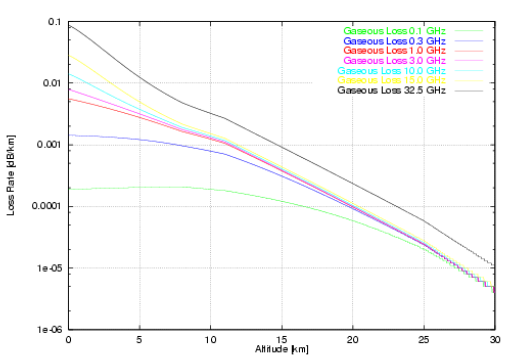
|
|
| Gaseous loss
rate model parameterised by frequency. |
|
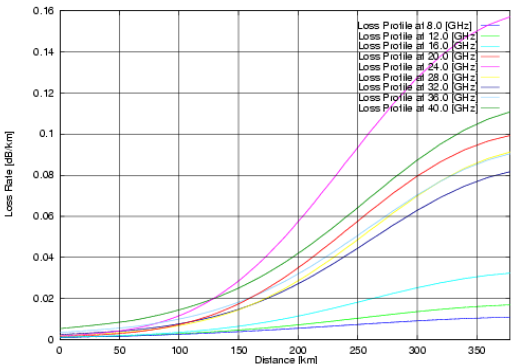
|
|
|
Gasous loss
profiles for a link between an aircraft at 11 km altitude and a ground
station, separated by a ground track distance of 380 km, using the
TROPPO simulation and a nonlinear refracted path model.
|
|
|
|






























